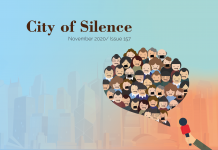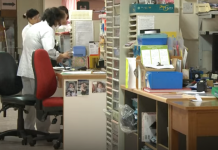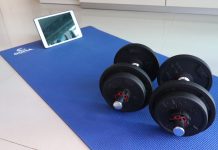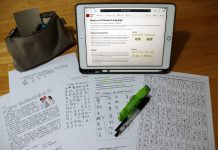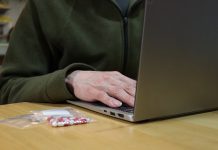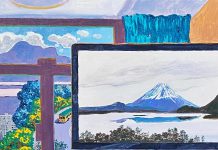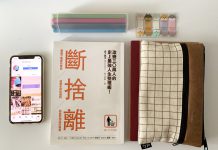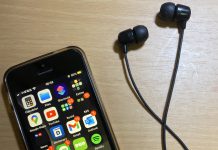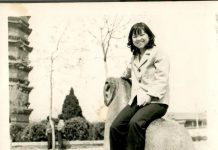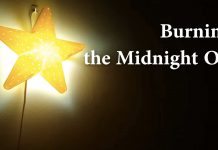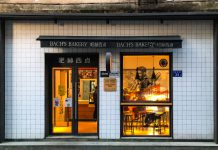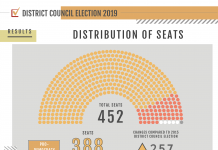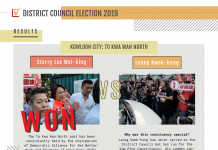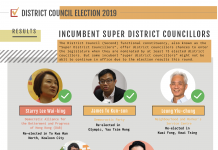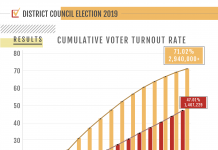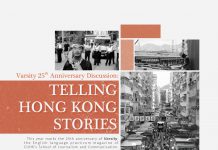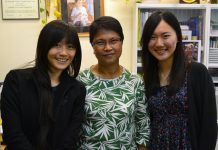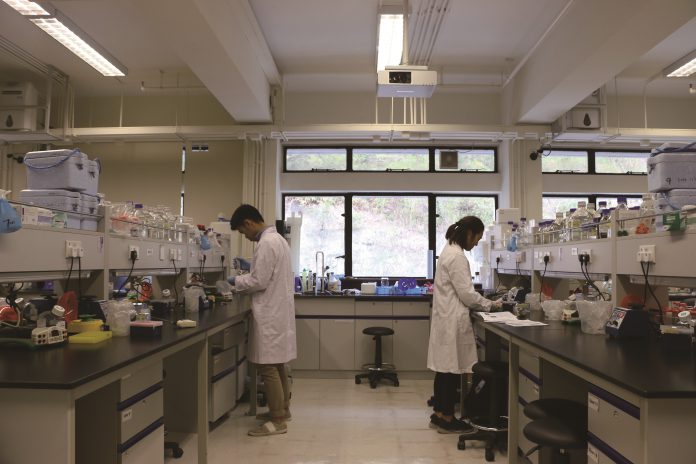The education system is driving students away from STEM subjects
By Selena Chan & Elaine Ng
In the science laboratory at S.K.H. Kei Hau Secondary School, cardboard virtual reality glasses are scattered on the tables where little robots hit ping pong balls with their paddles. Student members of the Electronics Club explain the robots were made for a robotics competition. They also demonstrate the use of augmented reality technology used to help students understand the periodic table in an interactive way. When a user looks through the glasses at the symbols of elements in the table, information about them will appear.
Chan Kim-ho, a Form Five student, has been a member of the club since his first year at the school. Kim-ho says that through joining STEM activities, such as interschool science competitions, he has paid more attention to new technologies and the scientific principles underlying them.
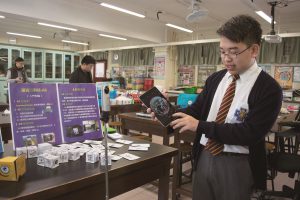
The term STEM originated in America and refers to the academic disciplines of science, technology, engineering and mathematics. As applied to education, it relates to a curriculum that uses an inter-disciplinary approach to teaching these disciplines in a hands-on way through real-world applications. S.K.H. Kei Hau Secondary School began taking this approach in 2003, long before Chief Executive Leung Chun-ying first proposed STEM education in the 2015 policy address.
Aligning with the worldwide education trend, the government is promoting STEM in the hope of nurturing talent to cope with rapid economic, scientific and technological developments.
The Education Bureau distributed a one-off grant of HK$100,000 to each primary school in the 2015/16 school year to start new initiatives and enhance existing STEM projects. In this year’s Policy Address, STEM education was again on the agenda with an additional one-off subsidy of HK$200,000 for each secondary school.
These initiatives follow an earlier pilot scheme where the government gave a HK$7.5 million subsidy to eight selected secondary schools in 2014/15 to incorporate IT enrichment programmes. Cheung Sha Wan Catholic Secondary was one of them. Ng Chi-wai, the teacher who designs the class, says not many schools are ready to practice STEM education. Ng explains that initiating a new project takes a lot of resources and time. The school curriculum is already quite packed and students have heavy workloads as it is.
The Academy of Sciences of Hong Kong (ASHK) was founded in December 2015 to promote the development and advancement of science and technology in Hong Kong. Following the government’s efforts to promote STEM education, the institution published the report, Science, Technology and Mathematics Education in the Development of the Innovation and Technology Ecosystem in January this year.
Ma Siu-leung, one of the authors of the report, is a former secondary school principal and led the government’s implementation of its 5-Year-Strategy of IT Education in Hong Kong. He thinks the guidelines given by the Education Bureau are vague and schools have little idea of how to use the money.
He says when it comes to STEM education, schools put a lot of emphasis on hands-on experience when in fact, theory is just as important.
“You cannot be a scientist through hands-on experiences only,” Ma says. “How do you launch a rocket if you know nothing about calculus?”
He stresses that practical experience and theory are inseparable and should be complementary. However, he thinks today’s students lack depth and breadth in scientific knowledge.
Ma believes there is a bottleneck in the development of STEM in Hong Kong due to a lack of well-trained teachers and a limited potential talent pool which can be traced back to the secondary curriculum.
In writing their report, the authors observed that fewer senior secondary and post-secondary students are enrolled in science and mathematics classes and, as a result, limit their career choices.
They noted that before entering senior secondary education, Hong Kong students perform well in mathematics and science. This is evidenced in their attainments in large-scale worldwide standardised assessments such as the Programme for International Student Assessment (PISA) and the Trends in International Mathematics and Science Study (TIMSS), which have been used for presenting points of comparison for education policy makers.
However, these attainments are not sustained. Ma says very few students engage in STEM-related activities at senior secondary level because many of them are trying hard to work the system, by using the least effort to get into university.
As part of the educational reform in 2009, the division of students into science and arts streams for Advanced Level (AL) exams for university admission was scrapped. This was so that students could develop in a holistic way. Under the current system, three years of study at senior secondary level is followed by a four-year degree course at university. The Diploma of Secondary Education (DSE), which replaced the Hong Kong Certificate of Education Examination, allows students to choose their electives across science and humanities electives.
On top of Chinese and English language, liberal studies and mathematics are now compulsory subjects. To enter university, students are required to score a minimum of 3-3-2-2, which means attaining level 3 in Chinese and English and level 2 in mathematics and liberal studies. This means they inevitably spend more time on the mostly language-based core subjects at the expense of other subjects like extended mathematics modules, known as M1,M2 and science electives.
While the intention was to encourage students to take both science and humanities subjects resulting in more all-rounded development, the reality is an increase in the percentage of students who do not take any science subjects at all. The proportion rose from 43 per cent in 2011/12 to 46 per cent in 2015/16. Figures also show that only 54 per cent of candidates took at least one science subject last year and 54 per cent of the cohort took only one elective.
Another new attempt to broaden students’ knowledge was the introduction of combined science in which students pick two subjects out of physics, chemistry and biology as one elective. Combined science has one of the lowest enrollment rates. Around 60 percent of schools offered the elective in 2011 but only around 10 percent of students took it. In 2015, the number of schools offering it fell to less than 20 per cent and with just 5 percent of students taking it.
Venessa Luong Ngai-po, a 19-year-old second year engineering student in the City University of Hong Kong, was one of the few who did take it (choosing chemistry and biology). The curriculum covers around 70 percent of the syllabus for each full science subject and Luong says the lack of comprehensiveness affects her understanding. “Combined science shouldn’t even exist,” she says, adding that the remaining 30 per cent missing from the syllabus is essential.
The problem extends to maths. Whereas 25 per cent of A-Level candidates enrolled in advanced mathematics, only 23 percent of DSE students enrolled in the courses for higher level mathematics, namely extended mathematics in calculus and statistics (M1) and extended mathematics in algebra and calculus (M2), in 2012. In 2016, this dropped to 14 per cent.
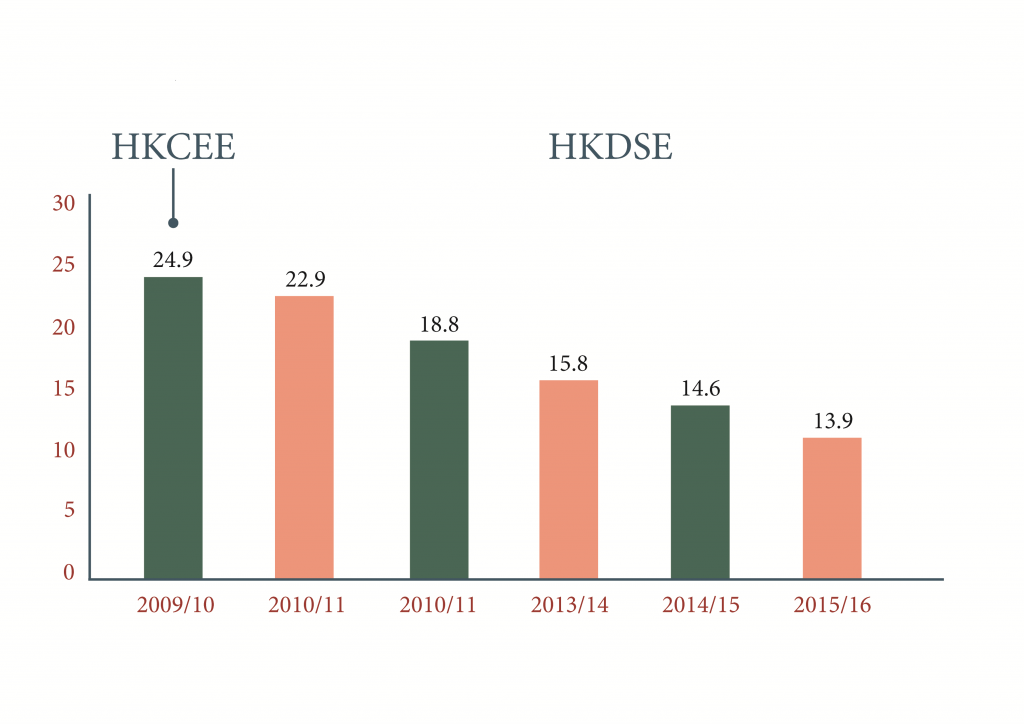
Source: The Survey on Senior Secondary Subject Information
Tony Tsang Ho-lam, a first year engineering student at the Chinese University of Hong Kong (CUHK), decided not to take M1/2 in DSE as he wanted to focus on other subjects, and because not all university programmes recognised them as a full subject. Although he is taking foundation courses provided by the faculty to catch up, it is not easy to do so in a short time.
Professor Henry Wong Nai-ching from ASHK is also dean of CUHK’s Science Faculty and a chemistry professor. He recalls that he studied additional maths at high school and pure maths before university. Even then, he took a further two years studying advanced calculus at university and still regards the maths education he received as insufficient.
“Many kids now don’t take M1/2; what can we do when they come to university?” he shrugs.
While many students may take just one science elective, Wong adds that many sciences nowadays are interdisciplinary. For instance, there are new academic areas such as biophysics which requires knowledge of both biology and physics.
Chiu Man-lok, a 21-year-old year 4 CUHK undergraduate studying food nutrition, took chemistry and biology as electives in secondary school. She says it took her a longer time to understand some of the course content as she had not studied physics. She explains that physics-related topics were brought up in discussions about certain food technology machines.
“Food nutrition seems to have no connection with physics but it turns out a lot is related to physics,” she says.
Dr Hui Wai-tin from the Department of Education Studies at Hong Kong Baptist University says there is a basic contradiction in the current education system in that university education is essentially elitist. The old A-Level system was also elitist because only one third of students would study for them in Form Six and Form Seven. However, the DSE curriculum is a kind of universal education, so the course contents have to cater to more students and therefore lack depth. Yet the students who take these courses still need to compete for the limited university seats.
Hui also says liberal studies in DSE is designed in a way that covers science but fails to achieve universal science education because a social scientific approach is adopted. “It doesn’t talk about the ozone layer but instead the Kyoto Protocol. It talks about solar energy but does it talk about how the solar panel is made? How wind energy works?”
The DSE curriculum, along with the requirements for university admission, may be discouraging students from studying science subjects at school. Cheng Siu-wing, who chairs the Hong Kong University of Science and Technology’s (HKUST) School of Engineering’s Local (undergraduate) Recruitment Admissions Committee, says students entering universities now have a less comprehensive understanding of science subjects.
“To a certain extent, if students just study according to the university admission requirements, their scope of study could be narrower,” Cheng says.
One result of the decrease in students taking DSE science electives is that some science and engineering programmes have dropped their candidate requirements from two or three science subjects to just one.
The median admission scores of the engineering schools in Hong Kong are among the lowest of all programmes – for example, the median admission score of the engineering faculty at CUHK is 4.21, which is the lowest among all programmes. This means some students regard the engineering programme as a safety net in their university choice and may not be genuinely interested in engineering or science.
Some schools, including HKUST, are now giving students more incentive to choose science, mathematics and technology electives by increasing their weighting in admissions scores.
“If they don’t need to cram for the four core subjects, they can spare more time on the electives subjects they are genuinely interested in,” says Cheng. His university is also considering a new method to avoid the loss of potential STEM talents by adopting admissions not based solely on DSE scores but on a deep interest in science and innovation.
Lam Hon-ming, a professor from the CUHK School of Life Sciences, says many students choose finance and business-related university programmes because they offer better prospects. Lam, who has been involved in scientific research for 30 years, says students are less determined to engage in science and innovation. While many regard STEM education as a panacea for the city’s future research and development, Lam believes Hong Kong is just starting to build a knowledge-based economy. Ultimately, success may depend on how lasting the government’s commitment is.
“[Are we engaging in STEM] because everyone in the world’s talking about STEM? Or is it because Hong Kong sees a need to transform from being dependent only on financial services?” he asks.
Edited by Karin Li




